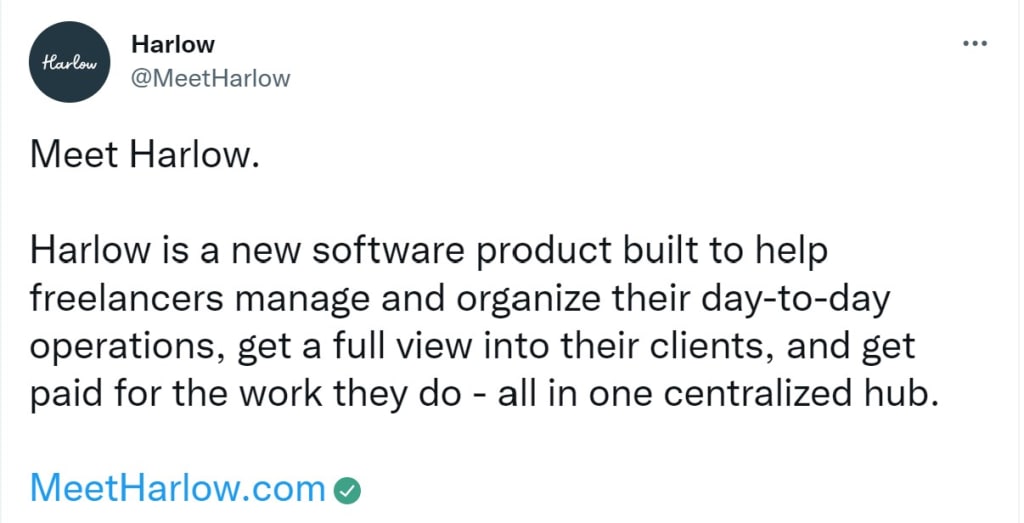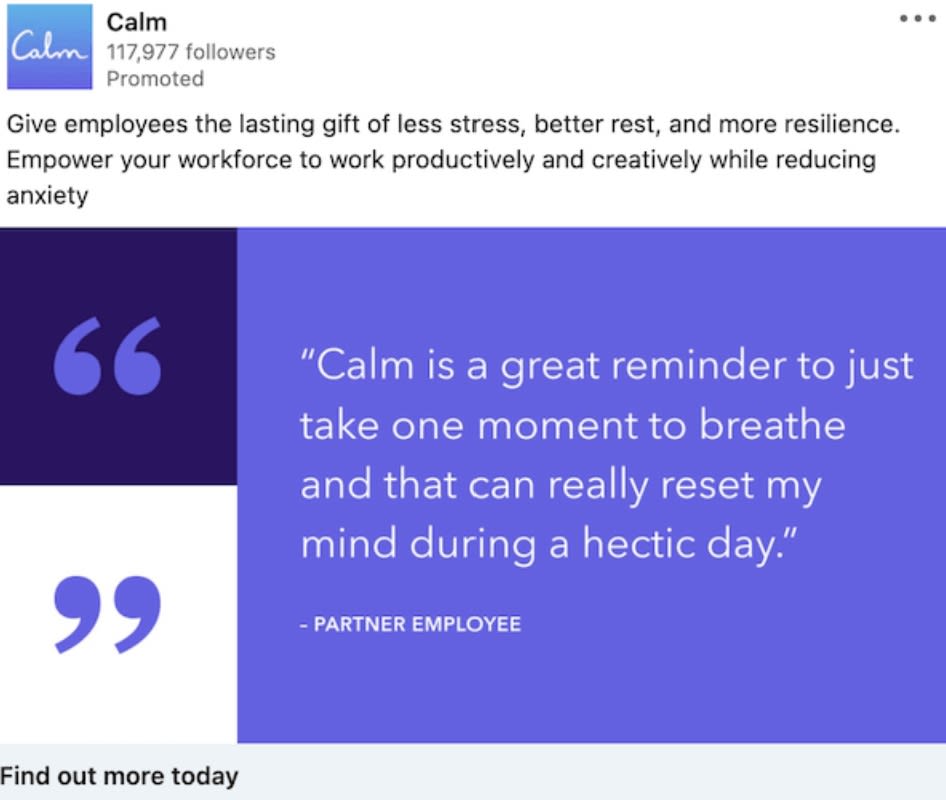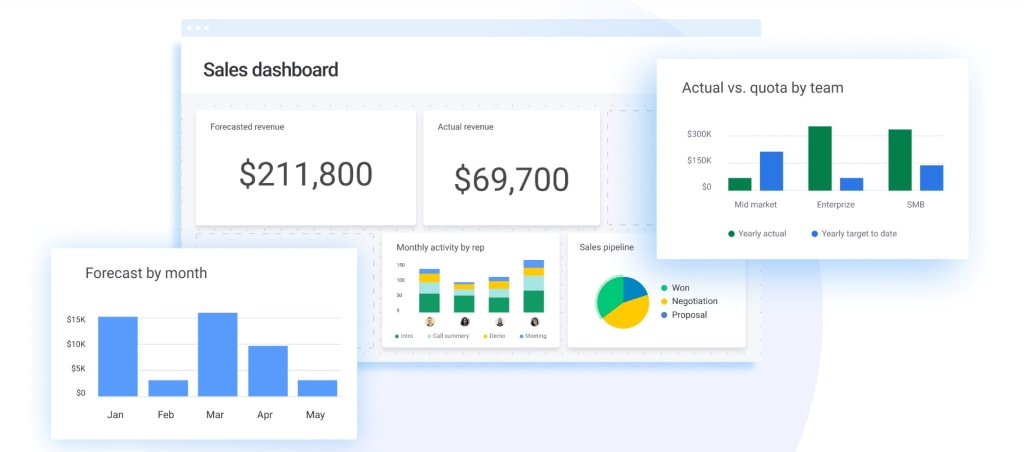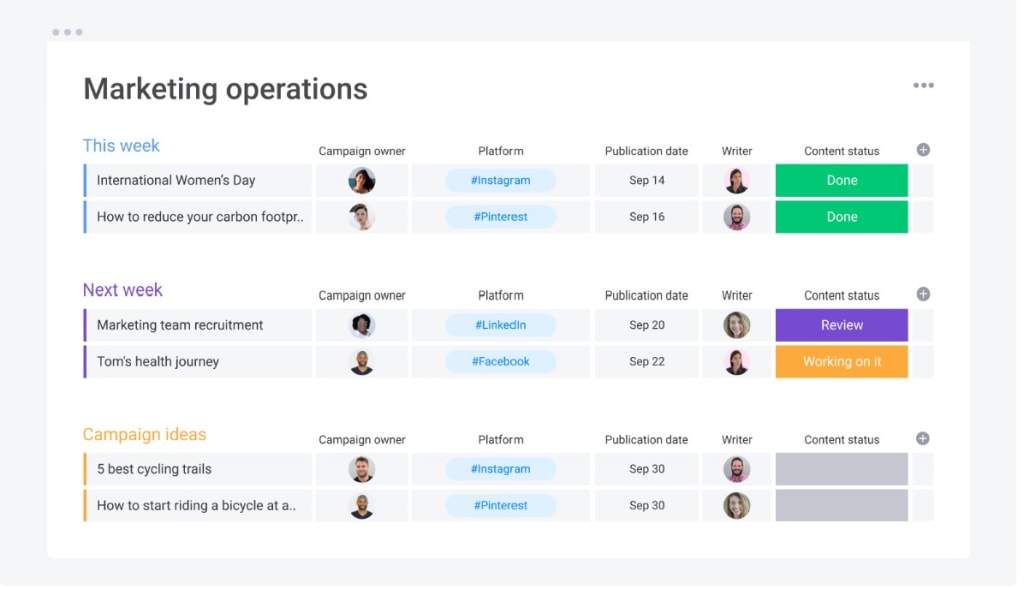Let’s start by addressing a common misconception. Demand generation is not about generating demand for the product or service you’re supplying. The demand is either there or not, so it’s fruitless to try and conjure it up out of thin air.
Instead, demand generation slots nicely into your sales and marketing equation to spread awareness about what you’re offering and then capitalize on that interest.
This guide covers how demand generation drives the continuous visibility of your brand and how the monday.com work OS is the perfect platform to manage your overarching crm strategy.
What is demand generation?
Demand generation is used by sales and marketing teams to create and distribute content to build brand reputation. It’s a long-term campaign that moves prospective buyers to the sales funnel and nurtures them into leads over time.
At the top of the funnel, this involves developing awareness of your offering. Further along the buyer journey, demand generation focuses on providing educational content to shape an understanding of how your specific product or service solves their buyer pain points.
Demand generation is rarely successful as a single-channel strategy. For example, if you only use Google Ads to capture attention, you could miss out on potential buyers on Instagram and Pinterest.
By combining multiple channels directed at a specific target audience, sales and marketing teams can take a more holistic approach to demand gen.
What are the differences between demand generation and lead generation?
Demand generation and lead generation are two terms often used interchangeably in sales and marketing. But there are clear differences between them.
Demand generation focuses on broadening a brand’s reach and letting your target audience know how you can solve their problems.
This can be as straightforward as opening a new social media account to announce that you exist. For example, software company Harlow started posting on Twitter more than six months before the official launch of its all-in-one freelance solution.

Lead generation uses call-to-action buttons to collect contact info and turn that initial consumer attention into leads and, ultimately, sales.
CoSchedule’s Headline Analyzer tool is an excellent example of a lead gen strategy. Site visitors can experiment with different headline options, but pressing “Analyze” prompts the user to sign up for a free account to generate granular insights about their choice of words.
But should demand generation always come before lead generation? Well, no, because modern consumers have a fluid relationship with the traditional sales funnel. They could move forward or backward, pause their buying journey, leave the sales funnel entirely, or return to it in the future. That’s why demand and lead generation may overlap, as there’s a need to continuously re-establish brand authority even as potential leads move closer to clicking “Buy.”
What is involved in demand generation?
The foundational elements of a demand generation program are:
- demand capture: you’ll establish initial brand awareness, then carefully steer this demand toward your proposition—how do your products or services solve their pain points?
- lead generation: the ultimate aim of demand generation is to transform any initial interest in your brand into leads.
- pipeline acceleration: by feeding a healthy portion of demand into the top of your sales funnel, you’ll ensure your pipeline keeps moving.
What are the best demand generation strategies?
If your company stumbles across a creative new way to spark a buzz about your product or service, then you’re already excelling at demand generation.
Until then, here are some tried-and-tested strategies that could work wonders for your brand.
1. Blogging
Attract leads with informative and in-depth articles on trending or evergreen topics. An engaged audience will keep returning and may eventually click on a CTA, furthering them through the sales pipeline.
Example: Ryan Law, writer for the popular Animalz blog, shared how the company’s unique approach to content marketing generates results. “I write for a very small, very precise audience. And when they find us, they talk about us, they care about us, and they are quite interested in working with us as well.”
2. Social media
Start a conversation on social platforms, or better yet, encourage followers to do the heavy lifting for you.
Example: Whisky brand Singlemalt.ph used an interactive quiz entitled “Which Kind of Whisky Drinker Are You?” to spread brand awareness. The results page led to a 10% discount and a social media integration that allowed quiz takers to share their whisky personality results across multiple platforms directly.
3. Thought leadership
Showcase your brand’s expertise through webinars, podcasts, expert interviews, or guest blogging.
Example: Accounting firm Deloitte pumps out stellar thought leadership content focusing on industry reports and insights from leading subject matter experts. Each study links back to a specific Deloitte service establishing the company as an authority in these fields.
4. Case studies
Potential buyers don’t want to feel like guinea pigs. They want assurance they’re buying from a brand that has already past successes from companies similar to them.
Example: Automation solution Zapier (which conveniently integrates with monday.com FYI) includes a selection of case studies on its website to demonstrate how the company supports partner apps with managing integrations.
5. Testimonials
Testimonials are an easy way to let potential buyers know your product or service is worth their money and time and how it’s been used and experienced by real customers.
Example: A LinkedIn testimonial of the Calm app (a business solution designed to protect employee mental health) hits the perfect audience at the right time—busy working professionals in the middle of their working day.

What are the different stages of a demand generation campaign?
Demand generation is a repeatable process that you can use to continuously drum up interest in your brand and your sales offering.There are five distinct areas to focus on, and for best results you’ll continuously evaluate, refine and optimize each of them.
1. Set your revenue goals
By understanding your ROI targets up front, you’ll create content and campaigns that speak directly to those goals. Come up with a figure, and work backwards to determine how many opportunities, sales-qualified leads, and marketing-qualified leads you require. This will inform how much demand you need to pump into the top of your funnel. The monday.com sales goals template will keep track of your revenue goals and inform how much demand you need to pump into the top of your funnel.
2. Define your buyer personas
Trying to attract all the people with all the things is an impossible task. You’ll need to focus on your specific audience to create a meaningful demand generation program.
Who have you created your product or service for? Spend time understanding their pain points, interests, and motivations, so you speak their language and create campaigns that resonate.
3. Create targeted content
Once you have a clear picture of who you’re talking to and what they want to hear, start generating content that will help them on their journey.
For example, if your buyer persona is a B2B buyer who tends to read educational content, then consider creating a whitepaper to attract their attention. But if your personas are socially engaged, aim for viral content on popular platforms like TikTok, Instagram, and YouTube.
Use monday.com’s content calendar template to easily plan and execute your publishing schedules.
4. Distribute content to generate leads
Whether you email a link to your end-of-year report to your target audience or have a promotional code to post on social media, the next step of your demand generation campaign is to put your content in front of the people who matter.
5. Implement demand generation metrics
A successful demand generation campaign is rarely something you’ll leave running in the background. It requires regular reanalysis and course correction to keep attracting demand.
Tracking metrics with monday.com is the way to do this. Set up KPIs (key performance indicators) to check you’re progressing towards your goals and to communicate the success of your demand generation campaigns across your team, and with key stakeholders.
Custom KPIs in your monday.com dashboard and measure factors like engagement, website visits, conversions, cost-per-target, and ROI to ensure your efforts are paying off.
Launch your demand generation campaign with monday.com
monday.com is a flexible work management platform and CRM system that seamlessly handles every stage of your sales and marketing activities. Use the following key features to set your demand generation teams up for success:
Dashboards: customize your CRM with the precise columns and stages you need for a comprehensive overview of your demand generation channels and overall sales pipeline. Choose board layouts, including Gantt and Kanban, to suit your workflow.

Integrations: monday.com integrates with marketing apps like Hootsuite and Facebook Ads to track your social media campaigns, Mailchimp to monitor the efficacy of your email outreach, or Survey Monkey to receive poll and quiz results.

Marketing activities template: use the in-built template to keep visual track of your marketing campaigns. It’s easy to collaborate with content writers and designers, set deadlines, and track the progress of your demand generation campaigns, all from a central location.

FAQs
1. What does a demand generation manager do?
A demand generation manager is responsible for the planning, execution, and optimization of demand generation activities. This includes developing content to attract customers, tracking metrics, and analyzing performance.
2. What is a demand generation campaign?
A demand generation campaign is a long-term, strategic marketing effort designed to nurture prospective buyers and turn them into leads. It involves creating content, from blog and social media posts to interactive quizzes and promotions, engaging with potential customers, and analyzing performance to drive growth.
3. What is B2B demand generation?
Demand generation is a marketing tactic suitable for B2B and B2C audiences. To attract a business-to-business audience, demand generation typically includes content such as eBooks, webinars, and white papers tailored to the unique needs of B2B buyers. It also involves targeting specific industry segments and leveraging data-driven insights to create more effective campaigns.
Track your demand generation to success with monday.com
Demand generation adds fuel to the engine of your business to produce a steady output of leads over time.
monday.com work OS is the perfect platform for tracking and managing the success of your demand generation campaigns. By providing a birdseye view of your multichannel strategy, you’ll easily create and manage campaigns, track performance metrics across channels, and collaborate with teams to optimize your efforts.

